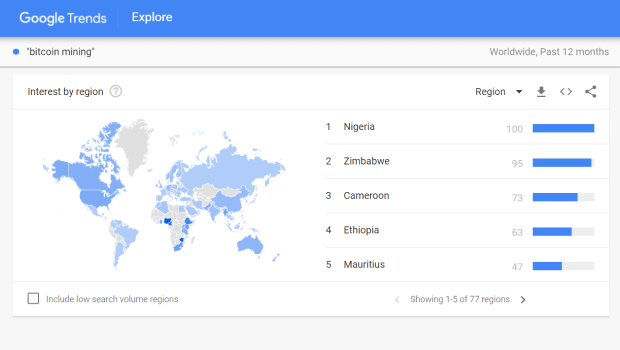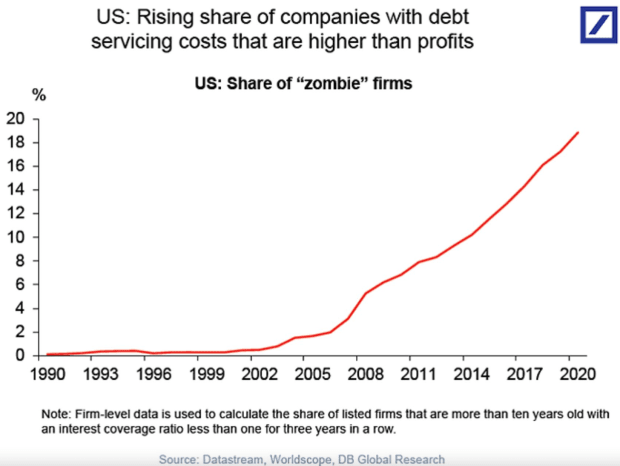What Will Bitcoin Development Look Like After Hyperbitcoinization?
After a decade of impressive development and adoption, Bitcoin has demonstrated its robustness and staying power. At this point, it’s clear that hyperbitcoinization isn’t a matter of “if” but a matter of “when.” While the fiat world struggles with perpetual crises, an ever-increasing number of individuals choose to buy their own share of disinflationary, sound money that can’t be censored or confiscated.
Correspondingly, we should expect that financial growth will be followed by the greater popularization of Bitcoin development. The internet-native generation is fittingly expected to be the most literate in terms of writing code, and this initial immersion in the digital era is more likely to draw them toward Bitcoin and, more specifically, Bitcoin development.
Furthermore, efforts such as Miniscript (a simplified version of Script, put together by Blockstream engineers Andrew Poelstra, Pieter Wuille and Sanket Kanjalkar) are making programming Bitcoin a lot easier. Therefore, we shouldn’t be surprised if similar devkits emerge in the future to allow anybody to create wallets and multisig contracts.
Under these circumstances, the question “What will Bitcoin programming look like in times of hyperbitcoinization?” becomes inevitable. Any answer is a fascinating exercise of imagination that reveals momentary expectations for the network and its underlying currency.
Consequently, as a way of broadening the perspective, we posed that question to four of the most prolific and brilliant minds in Bitcoin: prominent maximalist Giacomo Zucco, relentless educator Justin Moon, NodeLauncher lead developer and Nakamoto Institute co-founder Pierre Rochard, and Bull Bitcoin CEO and Cyphernode proponent Francis Pouliot.
As a way of obtaining a broader range of answers, the interview methodology intentionally included an open-ended question without specifics. We made no clear distinction between Bitcoin Core development and other projects, such as wallet standards or second layer/sidechain innovation. The only assumption introduced within the inquiry involves a greater coding literacy during the post-hyperbitcoinization era.
Consequently, the two certainties are (1) that development will happen and become friendlier to newbies (as in the case of Miniscript) and (2) that the entire world will denominate prices in satoshis.
The Role of Whales in the Age of Hyperbitcoinization
Pouliot anticipated that, during an age of hyperbitcoinization, people will focus on building development tools like Cyphernode, BTCPay Server, Electrum, Esplora or alternative Bitcoin full node implementations, as opposed to focusing on the Bitcoin network itself.
“I don’t expect protocol development to differ significantly,” said Pouliot. “The main difference will be an influx of financial resources made available to developers. The bottlenecks of contributing to Bitcoin Core will remain the same: expertise, peer review and backwards compatibility.”
In the true spirit of pragmatism, it’s important to inquire about how the funding of development could change. When Bitcoin becomes the global currency, issues such as maintaining compatibility with older clients and optimizing storage and transactions will be of the utmost importance. It would be foolish and shortsighted to assume that all problems will have been resolved before hyperbitcoinization happens, as greater demand for bitcoin also requires better review and more innovation. And even if the base layer remains as solid as a rock, there is still plenty of work to do on secondary layers and sidechains.
“Bitcoin whales will individually sponsor developers like the Medicis did with art.”
– Francis Pouliot
When he states that the bitcoin whales of today will be the Medicis of the hyperbitcoinization era, Pouliot may be highlighting the obvious. However, this parallel emphasizes the beauty and timelessness of Bitcoin: Just as Florence, Italy, blossomed under Lorenzo de Medici’s rule and the likes of Leonardo Da Vinci and Michelangelo Buonarroti were given the freedom and funds to create their masterpieces, whales of the hyperbitcoinization era will help build something that gracefully lasts throughout centuries. In the absence of greedy investors with low time preferences, Bitcoin will finally spread its wings.
Accessing Quality Software
“I think quality bitcoin software will be accessible, cheap, and ubiquitous.”
– Justin Moon
As an educator who spends a lot of time training future Bitcoin developers, Moon is particularly enthusiastic about the quality, availability and accessibility of software. This bullish standpoint is backed by a series of accomplishments that Moon has achieved. One of the most significant is Junction, a user interface for using hardware wallets with Bitcoin Core.
Moon pointed out that he utilized the descriptor language heavily in Junction. Like Miniscript, it “makes it easy to create watch-only bitcoin core wallets for certain script types (e.g., 2/3 P2WSH multisig) which greatly reduces the work involved in standing up a new wallet.”
If this stage of development is so prolific, then citizens of the hyperbitcoinized world will be able to build their own wallets and create multisig contracts according to their requirements.
For instance, even children who receive BitPiggys will be able to build their own watch-only wallets and check how many satoshis they have received for doing chores around the house.
“Too Many High-Quality BIPs Would Be a Great Problem to Have!”
Rochard is also optimistic about the future of development and derives his bullish stance from a prolonged observation of other accessible software initiatives.
“We have examples of open-source software projects scaling as contributors become more specialized and the number of maintainers increases, most notably the Linux kernel,” he said.
To him, there is no such thing as too much development, as he considers that the division of labor for coding (innovation and review) will naturally balance. Also, the Nakamoto Institute’s treasurer appears to associate popularization (an increase in the quantity of work) with a greater quality standard — if more people work on Bitcoin projects, then it’s also more likely for elegant solutions to emerge and get polished.
When referring to BIPs (Bitcoin Improvement Proposals), Rochard stated, “We currently don’t have enough BIPs, so there are informal improvements and fragmented developer efforts. Too many high-quality BIPs would be a great problem to have!”
On the other hand, we should also take into consideration the limitations of Bitcoin. Just because a greater number of individuals with coding literacy gets involved, doesn’t mean that the fundamentals will get changed drastically.
“Increased funding won’t significantly impact Bitcoin protocol development, but it will certainly lead to a robust ecosystem of developer tools that will abstract away the complexity of Bitcoin.”
– Pierre Rochard
The Importance of Quality Control
The positivity expressed by the other three respondents is contrasted by Giacomo Zucco’s critical pragmatism. In his view, even if development becomes easy to do and understand, there will still be a great need for standardization, abstraction and thorough peer review, so that more development efforts increase utility and not just entropy.
“If you don’t have fairly reviewed, established and audited tools and standards to compose transactions, then you have to do it all manually — and the odds of messing up are very high, especially in the case of complex, advanced and feature-rich setups.”
– Giacomo Zucco
On the other hand, he praises efforts like Miniscript and appreciates the fact that lawyers and contract experts will be able to translate their logic into practical transactions. Abstract thinking can easily turn into effective multisig contracts that solve real problems.
Around the time of hyperbitcoinization, Zucco believes that most scripting will take place off-chain, thanks to new paradigms like Taproot and Scriptless Script. This is great for privacy and sovereignty, as conditions can be composed outside of the transaction, and only the result of the signature interaction becomes public. But even in this case, a universal external standard is required to avoid unwanted propagation issues.
“I think we could eventually arrive to a point which may appear similar to what shicoiners promote today: the tendency to apply some Bitcoin-like logic everywhere, including those very centralized setups where it wouldn’t seem to belong from a purely technical point of view,” Zucco said.
Though Zucco admits that the idea wouldn’t make sense within the current status quo, in the hyperbitcoinization era there could be companies that decide to build their products on top of Bitcoin’s layers just to be able to leverage all of the existing libraries, tools, practices and standards.
Before becoming the system which ensures the creation and transfer of sound money, Bitcoin is a successful open-source project whose development is invaluable and whose robustness can attract many centralized applications as well.
“After hyperbitcoinization, for example, if security of Bitcoin multisig is a standard used to manage all the funds of the company, then it makes sense to actually piggyback this very strong template also for things that do not directly need decentralization or trustlessness,” Zucco said. “It would be the same dynamic that bring many companies today to build upon open, global, decentralized standards like TCP/IP, to manage closed, local, centralized networks, instead of using mainframes.”
The post What Will Bitcoin Development Look Like After Hyperbitcoinization? appeared first on Bitcoin Magazine.









